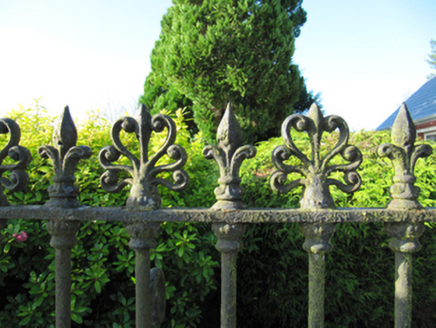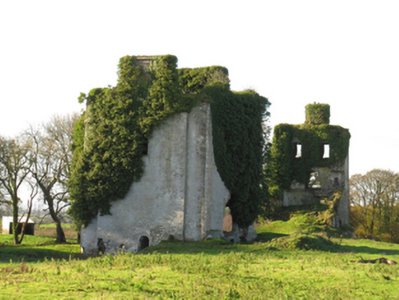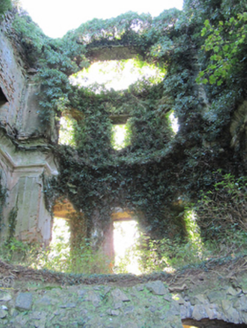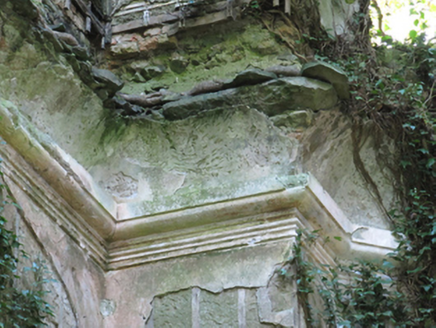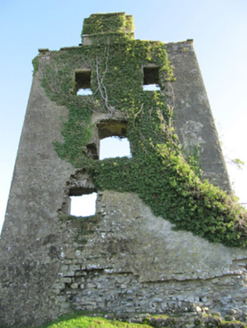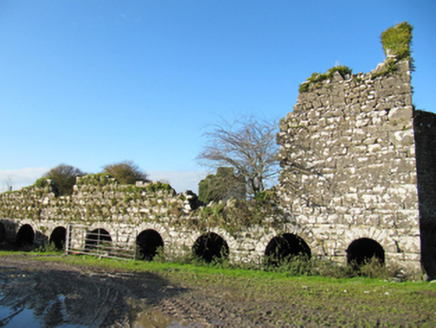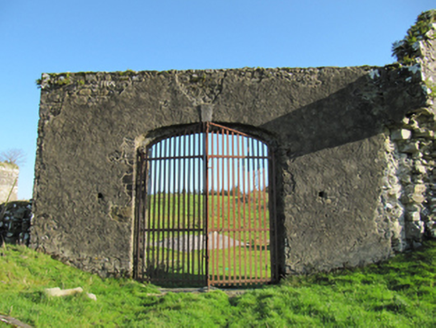Survey Data
Reg No
30409809
Rating
Regional
Categories of Special Interest
Archaeological, Architectural, Historical
Original Use
Country house
Date
1410 - 1770
Coordinates
172329, 222329
Date Recorded
08/11/2009
Date Updated
--/--/--
Description
Ruinous remains of multiple-bay three-storey over basement country house, built c.1750, incorporating tower house, built 1412, to west end. West wall standing over tower house undercroft, central range of house demolished, east elevation, single-bay of garden (south) elevation with full-height canted bay window, and part of east bay of north (front) elevation remain. Roofless. Remains of rendered walls with some cut limestone quoins and string courses. Square-headed openings, dressings and fittings gone. Evidence of plaster cornices to interior. Undercroft with vaulted ceiling having excellent wicker centering. Ruinous remains of outbuilding to east with round-headed arches having cut limestone voussoirs, giving onto single-cell chambers with corbelled ceilings. Remains of carriage arches, set in rendered walls, one with double-leaf wrought-iron gates. Site entrance to roadside with square-profile cut stone piers with decorative cast-iron gates and matching railings set on cut limestone plinth wall, with matching cut limestone terminating piers.
Appraisal
Although largely ruined, this house is of evident architectural interest and is also an important example of continuity from the medieval period tower house to the eighteenth-century country house. Some indication of the former grandeur and scale of the latter part is seen in the remaining sections of interior plasterwork and the exterior cut limestone quoins, evidence of skilled craftsmanship. A visitor to the house in 1787 described the bay windows to the garden front, one of which remains, and an attic level lit by cupolas at each end, of which no trace remains. One wall and the undercroft of the towerhouse are extant, the latter having evidence of excellent wicker centering. The remains of the outbuilding with the multiplicity of low arches is unusual, with many small low ceilinged chambers. Along with the walled garden, dovecote and entrance gates, these form a notable group of demesne structures.
